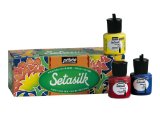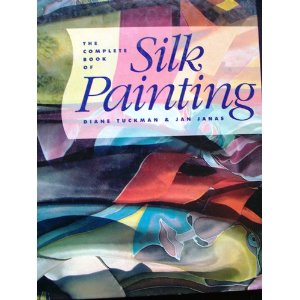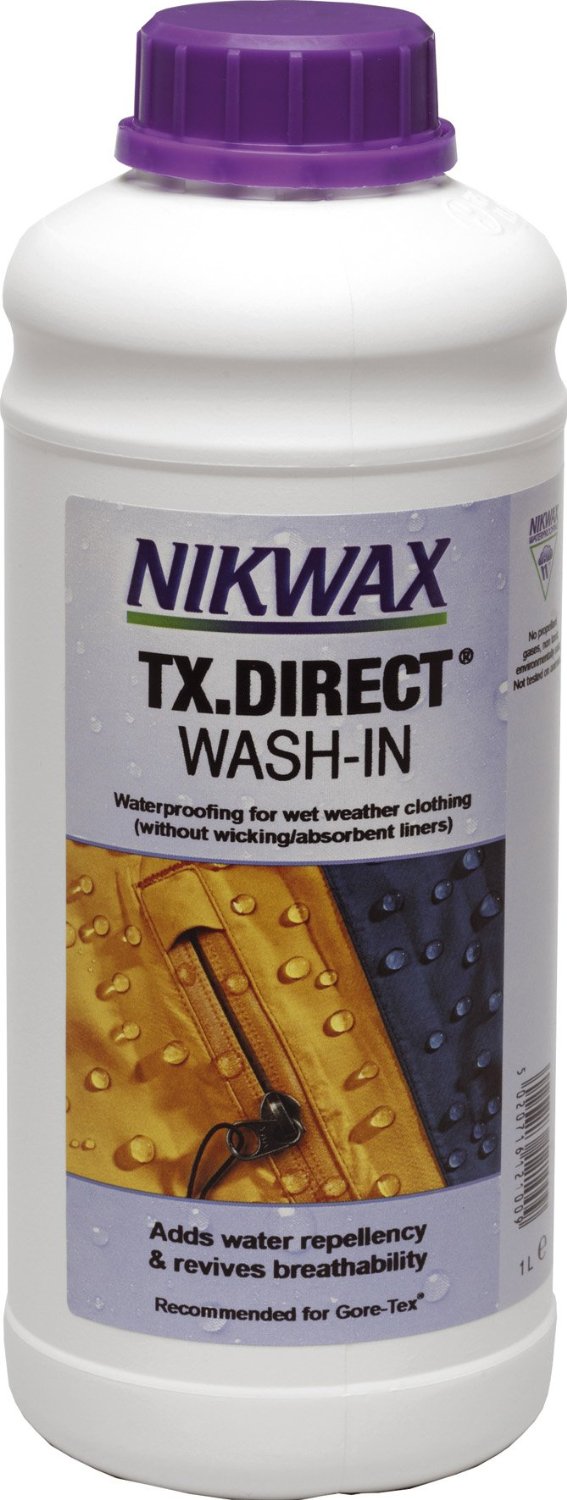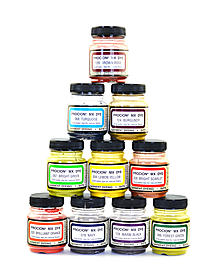Main | 2014 June »
Wednesday, July 09, 2014
am looking for liquid Procion MX dyes for painting silk blouses
from a master


DVD: Silk Painting
With Jill Kennedy




Pebeo Setasilk Silk Painting Set, Cardboard Box of 10 Assorted 45-Milliliter Jars
Fix Setasilk silk paints by ironing 3 to 4 minutes on the reverse side of the fabric with a hot iron.




Silk Painting: The Artist's Guide to Gutta and Wax Resist Techniques
by Susan Moyer




Beginner's Guide to Silk Painting
by Mandy Southan




Ann Milner's book
The Ashford Book of Dyeing


The 7"x9.5" blue revised edition, dated 1998, is a very useful guide, but apparently there's a problem with a different edition. Look for ISBN 0-908704-88-7.


Linda Knutson's book
Synthetic Dyes for Natural Fibers




The Complete Book of Silk Painting
by Diane Tuckman


Country or region: USA
Message: I am looking for liquid Procion. I am new at this and I love the way the fabric in silk reacts to it... I am a designer of silk blouses I love the way the dyes bleed together but I can not find anyone out there that knows where I can get any Procion MX in liquids. Also if I use this product, the powders do I have to wash silk in synthropol and soda ash first then let dry, put on my colors with gutta resist and then dyes?
You shouldn't put gutta on silk that you have already impregnated with soda ash. It is better to apply the gutta before applying any chemical. You can add soda ash to the liquid Procion MX dye mixture immediately before painting it on, pouring out just enough dye to use immediately, and saving the rest without mixing it with soda ash. The dye will last for about an hour after you add the soda ash to it.
Saturday, July 05, 2014
I would like to know If it is possible to dye shirts with Italian Ink? I make designer clothing and was wondering if there is a higher quality more expensive ink that people use.
Country or region: United States
Message: Hello! I would like to know If it is possible to dye shirts with Italian Ink? I make designer clothing and was wondering if there is a higher quality more expensive ink that people use.
Friday, July 04, 2014
How can I fix the design I've painted using an old set of fabric paints that are no longer made?



Country or region: Melbourne, Australia
Thursday, July 03, 2014
How can I dye a brand new white waterproof tent for an art project?
so you can dye it


The Ray-Way Tarp Book: How To Make A Tarp And Net-tent, And Use Them In The Wilds


Waterproof your tent
fly after you dye it


Nikwax TX.Direct
Wash-In waterproofing



Country or region: Devon, UK
Message: Hi, I need to dye a brand new white waterproof tent for an art project. I'm sure that the waterproof ripstop will reject any water and any traditional dye.
am looking for liquid Procion MX dyes for painting silk blouses
Name: Linda
—ADVERTISEMENTS—
Learn silkpaintingfrom a master

DVD: Silk Painting
With Jill Kennedy

Pebeo Setasilk Silk Painting Set, Cardboard Box of 10 Assorted 45-Milliliter Jars
Fix Setasilk silk paints by ironing 3 to 4 minutes on the reverse side of the fabric with a hot iron.

Silk Painting: The Artist's Guide to Gutta and Wax Resist Techniques
by Susan Moyer

Beginner's Guide to Silk Painting
by Mandy Southan

Ann Milner's book
The Ashford Book of Dyeing
The 7"x9.5" blue revised edition, dated 1998, is a very useful guide, but apparently there's a problem with a different edition. Look for ISBN 0-908704-88-7.

Linda Knutson's book
Synthetic Dyes for Natural Fibers

The Complete Book of Silk Painting
by Diane Tuckman
Country or region: USA
Message: I am looking for liquid Procion. I am new at this and I love the way the fabric in silk reacts to it... I am a designer of silk blouses I love the way the dyes bleed together but I can not find anyone out there that knows where I can get any Procion MX in liquids. Also if I use this product, the powders do I have to wash silk in synthropol and soda ash first then let dry, put on my colors with gutta resist and then dyes?
With silk, you have many different choices, because natural silk works well with both the fiber reactive dyes used for cotton and the acid dyes used for wool. Procion MX is not the only dye that bleeds together the way you like. Any good fiber reactive dye will work for you.
The main question is whether you need a dye that will set at room temperature, or if you are willing to use a dye that must be steamed. If you're okay with steaming, as serious silk painters generally are, then you have several good dye choices available. If you do not want to steam, then either you must use Procion MX dye, or you should give up on dye and use fabric paint, instead. Fabric paint, unlike dye, can be set with dry heat, such as by ironing. However, the colors you can get, while very bright, aren't always 100% as bright or deep as those of dyes, and the fabric paint stiffens the fabric a tiny amount, even with the best fabric paint. I recommend you buy a small starter kit of a good silk paint, such as Setasilk or Dye-Na-Flow, and paint a silk scarf, to see whether the colors and the feel of the fabric suit you. They can be very nice. If you don't like the feel or look of the silk paint, then you will probably want to take up steam-setting silk dyes.
Procion MX dye, which is the dye used in tie-dyeing (as well as many other methods), has the fastest reaction time of all of the fiber reactive dyes. As a result, Procion MX dye can be set at room temperature, using soda ash to get the pH high enough, but the rapid reaction rate also makes it impractical to sell it in liquid form. The dye would not stay fresh long enough to allow for all the stages in wholesaling and retail selling before they go bad.
You can dissolve your Procion MX dye powders at home and mix your different colors in amounts large enough to use over the course of several days. If you store them at room temperature, you can expect them to maintain full strength for at least a week, assuming you are very careful to never let any soda ash contact the dye stocks, or longer, up to three or even six months perhaps, if you refrigerate them. As the dyes in solution get older, however, they will tend to react with the water, leaving less of the dye able to react with the fiber in your silk. Colors mixed from more than one dye color will tend to shift in color, as one type of dye molecule goes bad more quickly than another type of dye molecule.
Another drawback to using Procion MX dyes for silk painting is that the color chips for the premixed colors you buy are descriptive of the color produced by each mixture on cotton. Premixed Procion MX dyes will produce a different color on silk. For example, the same mixture of lemon yellow, turquoise, and cerulean blue will produce an aqua color on cotton but an emerald color on silk, but in the dye seller's catalog will be pictured only as aqua. The color shifting occurs only when you set the dye with soda ash or other high-pH chemical. If you use an acid, such as vinegar, instead of soda ash, the colors produced are more similar to what you would get on cotton, but steaming is necessary to set Procion MX dyes when acid is used instead of soda ash.
Procion H dyes are related to the Procion MX dyes, but they have one fewer chlorine atom on their reactive portion, so they react much more slowly. This means that they must be steamed after you have finished painting them onto your silk and letting them dry. If you are willing to go to the trouble of steaming, you will find that these dyes are much more versatile for silk painting, because you can work on a piece and then leave it alone for days or weeks before continuing your work on it, while expecting your jars of dye to maintain the same strength over time. We used to be able to buy powdered Procion H dyes and mix them ourselves, but they have largely been replaced for this purpose by another dye which is just as good. However, you can still buy ready-to-use liquid Procion H dyes, completely mixed with all the chemicals needed, in a wide range of dyes, from G&S Dye in Toronto.
Remazol dyes, also known as Vinyl Sulfone dyes, are the replacements for Procion H dyes. Like Procion H dyes, they last for some time in liquid form and can be purchased already dissolved. It is possible to set these dyes at room temperature, on either silk or cotton, provided the right chemicals are included and the room is warm enough, but silk painters often choose to just paint their silk with the dyes and then steam them to set them. Getting the pH exactly right is not nearly as important if you steam-set your silk as it is when you set it at room temperature.
Both Procion H and Remazol dyes are fiber reactive dyes, like Procion MX dyes. I like them because they are reliable, brilliant in color, resistant to light-fading, and because the manufacturers freely tell us what dye chemicals are in the dyes they sell us.
Another option for silk painting is to buy acid dye powders, such as the Jacquard Acid Dyes. As with the Procion H and Remazol fiber reactive dyes, you can use acid dye powders to mix your own dye colors that will last a long time in liquid form. They must be steamed to set.
A different type of premixed liquid silk painting dye, often referred to as the French silk dyes, contains a wide range of different classes of dyes, including basic dyes, acid dyes, and some reactive dyes, premixed so that you do not know which types of dye are in a bottle. They require longer steaming than the Remazol or Procion H dyes (up to three hours). Different brands of the French silk dyes include Sennelier Tinfix Design, H. Dupont silk dyes, Pebeo Soie, and Kniazeff. They are known for producing very bright or intense dye colors. Unfortunately, in some cases they are notoriously poor at retaining their color when exposed to bright light, since some of them contain basic dyes, which are highly susceptible to light-fading. Their safety is also more of a question, because the manufacturers do not reveal what dyes they use in their mixtures. The exact choice of colors in any specific premixed dye is always a trade secret, but it should not be a secret what dyes are used in an entire dye line as a whole. Many silk painters have produced very beautiful work using this type of dye. I think that Procion H and Remazol dyes are an excellent and economical substitute.
In response to your last question,
Also if I use this product, the powders do I have to wash silk in synthropol and soda ash first then let dry, put on my colors with gutta resist and then dyes?
You shouldn't put gutta on silk that you have already impregnated with soda ash. It is better to apply the gutta before applying any chemical. You can add soda ash to the liquid Procion MX dye mixture immediately before painting it on, pouring out just enough dye to use immediately, and saving the rest without mixing it with soda ash. The dye will last for about an hour after you add the soda ash to it.
Alternatively, you can soak the silk (with any gutta lines already drawn, and heat-fixed if they are a water-based gutta substitute) in soda ash, hang it up to dry, and then paint with your liquid Procion MX dyes, preferably with urea mixed into the dyes to keep them from drying too quickly, as the dye-fiber reaction will cease as soon as the dye is completely dry. You must pour out a small amount of liquid dye mixture to dip your brush in, because the brush will transfer soda ash from the dry silk to your container of dye, so it too will start to go bad soon. Don't dip your brush into your whole bottle of dye solution, because it will go bad if you do.
Some silk dyers say they have no trouble with dyeing silks purchased from a dye supplier, such as Dharma, without prewashing the silk, but silk clothing and silk yardage that are not sold by dye suppliers always do need to be prewashed, as otherwise there may be streaks of sericin or of traces of oils and finishes from the weaving process that may create undyed streaks in the dyed fabric. Adding some soda ash to the load of wash will help to get the fabric cleaner than using Synthrapol alone. However, this soda ash is removed when the fabric is rinsed, so it is no longer present as a dye fixative when you paint the fabric. You have to soak the silk in soda ash separately and not rinse it before hanging it up to dry, if you choose to use soda ash.
Please note that soda ash softens silk. If you want your silk to remain as shiny as possible, with its original stiffness, you should never use soda ash or any other high-pH chemical. Always use steaming, without soda ash, to set the dye in silk whose original sheen and texture you wish to preserve.
(Please help support this web site. Thank you.)
(Please help support this web site. Thank you.)
Saturday, July 05, 2014
I would like to know If it is possible to dye shirts with Italian Ink? I make designer clothing and was wondering if there is a higher quality more expensive ink that people use.
Name: Mathias
This kit includes 3 small jars of dye, plus soda ash, which is used to permanently fix the Procion dye to natural fibers such as cotton and silk
Large 8-ounce jars of Procion dye are more economical; don't forget to purchase soda ash and urea, as well!


Procion MX Fiber Reactive Dye

Large 8-ounce jars of Procion dye are more economical; don't forget to purchase soda ash and urea, as well!

Procion MX Fiber Reactive Dye
Country or region: United States
Message: Hello! I would like to know If it is possible to dye shirts with Italian Ink? I make designer clothing and was wondering if there is a higher quality more expensive ink that people use.
Ink, when used as a fabric dye, will always produce much lower quality results than the best fabric dyes. This is because ink does not itself form a chemical bond directly to the fiber in the fabric, so it will tend to fade quickly as the garment is washed or dry cleaned. The right dye is needed in order to obtain high quality long-lasting results.
The best choice for fabric dye depends on the fiber content of the shirt. If the shirt is cotton or rayon, you will always get better results with a fiber reactive dye, such as Procion dye or Remazol dye. If the shirt is natural silk, the same dyes will work well, as will another group of dyes called the acid dyes. If the shirt is nylon, it can be dyed with acid dyes, but if the shirt is polyester, it can be dyed only with a special kind of polyester dye, called disperse dye. Many of these dyes require high temperatures for fixing; only the Procion dyes (and sometimes some other fiber reactive dyes) can be used at room temperature and fixed with nothing more than soda ash.
If you are interested in drawing on the fabric with a high quality fabric dye, this can be done. If you want your dye "ink" to be slightly thicker than water, you can use sodium alginate, in small or large quantities, to thicken it to any consistency you like. Ink made this way from Procion MX dyes should also have urea added, to make sure the "ink" stays moist long enough for it to react well with the fiber. Because not all of the dye will bond to the fiber, the excess unattached dye must be washed out afterwards; this means that your design should look darker than you want, while you are applying it. Soda ash must either be added to the Procion ink just before application, or added to the shirt before dyeing by soaking it in soda ash and water, and then line-drying. A tie-dye kit is ideal for beginners in drawing dye on fabric, because the materials are the same.
For drawing on polyester, the best approach is transfer dyeing. Using disperse dyes to mix an ink or a paint, or using fabric transfer crayons which are made of disperse dye, create your design on paper. After it is dry, place it face down on your polyester or nylon shirt and use a hot iron to transfer the dye from the paper to the synthetic fiber. The colors are much brighter and more intense after transferring to the polyester than they first appear in your drawing on the paper, and they last quite well when the shirt is washed, though it is best to line-dry the shirt ever afterwards, rather than using a hot dryer after laundering. There are a couple of brands of premixed disperse dye inks that are made specifically for use in making transfer prints for polyester; the two brands I know of are DecoArt Ink Effects
and Transprint inks.
Many of these dyes are difficult or impossible to find locally. The easiest dye to find locally is all-purpose dye, which is sold under brand names such as Rit, but it does not produce long-lasting good results and cannot be used for drawing designs. The best way to acquire high-quality dyes is by ordering from companies such as PRO Chemical & Dye, Dharma Trading Company, or any of the artists' suppliers that sell Jacquard Products dyes. For a list of suppliers and contact information for them, see my page, "Sources for Dyeing Supplies Around the World".
(Please help support this web site. Thank you.)
(Please help support this web site. Thank you.)
Friday, July 04, 2014
How can I fix the design I've painted using an old set of fabric paints that are no longer made?
Name: Rochelle
—ADVERTISEMENTS—
Country or region: Melbourne, Australia
Message: I have been given a very old box of Pebeo paint express. Pebeo no longet make them. Please do you know how to fix them? This is not my thing. I'm a painter! I've just attacked a blue chiffon ball dress with them for an under the sea ball coming up so it looks like the ocean and seaweed. I want to embroider little nemos on the front but obviously don't want the cottons ruined please help!!
Pretty please
Desperate
No instructions were in this giant box filled with them!
Desperate
No instructions were in this giant box filled with them!
Have you already applied these silk paints to the blue chiffon gown? Always test your materials on a small scrap of fabric before applying them to any large or valuable material! I am afraid that you may have wasted your effort and ruined the gown.
The only traces I can find online of a Pebeo Express dye are for Pebeo Orient Express silk dyes. Does the phrase "Orient Express" appear anywhere on the packaging? This phrase is a reference to the famed Orient Express luxury train which used to run from Paris to Istanbul, and is meant to convey a sense of luxury, glamour, and adventure. Here is link to a sheet of instructions from PRO Chemical & Dye for using Pebeo Orient Express silk paints: Silk Painting using Pebeo Orient Express.
If what you have are Pebeo silk dyes, rather than fabric paints, they must be used only on 100% silk, never on polyester or nylon. What fiber is your chiffon made of? If it is a chiffon woven of a synthetic fiber, rather than silk chiffon, then any true silk dye cannot be set on it, so I advise you never to wash it or clean it, and be very careful not to allow moisture of any sort to contact it. Do not sit on upholstered furniture while wearing this dress, and do not carry a handbag onto which the dye may transfer by rubbing against it.
If your dress is made of silk chiffon, a 100% natural fiber, then you can fix the dye according to the instruction sheet, or, if the fixative is missing, for most silk dyes, you can steam the dye to make it permanent. Steaming silk dyes cannot be done with a steam iron or an ordinary clothes steamer, but instead is done just like steaming vegetables to cook them. The silk-painted material is allowed to dry, then carefully wrapped in paper so that no two parts of the fabric touch one another, since dye will spread wherever the fabric touches; the fabric is then rolled up in a bundle, and placed on a rack over boiling water inside a large covered pot. Some silk dyes require thirty minutes of steaming to be made permanent, whereas other silk dyes may require up to three hours of steaming. It is essential that the pot not be allowed to boil dry during this process.
If these are not Pebeo Orient Express silk dyes, then perhaps they are acrylic-based silk paints. Pebeo has manufactured both dyes and fabric paints. Paints are different from dyes in the way they are fixed to the fabric. Dye is fixed with wet heat, using steam, whereas fabric paint is set with dry heat. In the case of dyes, the colored material reacts directly with the fiber, so it will not work with different kinds of fibers. In the case of fabric paints, the colored material is an insoluble pigment which is glued onto the fabric with the binder in the paint, so the precise fiber content is not as important, though there are some fabric paints which will not work on synthetic fibers such as polyester or nylon, but instead work only on natural fibers such as silk or cotton. Some fabric paints do work on synthetic fibers such as polyester.
Most fabric paints (not dyes) can be set on the fabric with dry heat, by ironing the reverse side of the fabric, making sure that every part of the painted fabric has been heated to medium heat for at least a minute. However, many fabric paints will become permanent even without this heat-setting stage, if they are allowed to dry and age for at least a month after painting, before they are washed or worn.
If you have no idea what the fiber content of the dress is, then you should assume it is synthetic, since synthetic dresses are cheaper and more widely available. In an inconspicuous part of the dress, inside a hem, first try heat-setting the dye or paint with an iron, then, after it is cool, dab a little water onto a place where you have applied the paint. If the redampened dye or paint transfers to a white cloth, you will know that this dress is not safe to wear, for fear of spreading dye onto whatever it touches. If the dye doesn't transfer, then you can proceed to the next step in your project, and decorate the dress with embroidery.
For your next project, if you are painting a synthetic-fiber dress, you may want to use Jacquard Dye-Na-Flow fabric paints, or Jacquard Lumiere metallic and pearlescent fabric paints, because they will work on both synthetic and natural fiber fabrics. Setacolour Transparent fabric paints should not be used on 100% synthetic fiber fabrics. If you can't find the Jacquard fabric paints in a local crafts shop, you can find a source in Australia from which to order them by scrolling down the the appropriate section of my page, "Sources for Dyeing Supplies Around the World".
(Please help support this web site. Thank you.)
(Please help support this web site. Thank you.)
Thursday, July 03, 2014
How can I dye a brand new white waterproof tent for an art project?
Name: Alex
—ADVERTISEMENTS—
Sew your own tent flyso you can dye it

The Ray-Way Tarp Book: How To Make A Tarp And Net-tent, And Use Them In The Wilds
Waterproof your tent
fly after you dye it
Nikwax TX.Direct
Wash-In waterproofing
Country or region: Devon, UK
Message: Hi, I need to dye a brand new white waterproof tent for an art project. I'm sure that the waterproof ripstop will reject any water and any traditional dye.
Do you know of any solutions/options that won't compromise the water resistance? Is my only option to just treat the surface by painting?
Any thoughts/tips would be greatly appreciated! Thanks in advance, Alex
I'm afraid you can't even paint a waterproof tent! The paint will peel off of the waterproof surface.
What I recommend that you do is buy some non-waterproofed white ripstop nylon, sew yourself a tent fly, dye it with acid dyes or paint it with a suitable fabric paint (buy a small jar and test it on a leftover scrap of the nylon first), then treat it with a DWR (Durable Water Repellent) finish such as one sold by Nikwax. The white tent will look good with a colorful dyed tent fly. Does the tent already have a detachable fly? If so, you can use it as a pattern in sewing your own.
(I'm not certain that the waterproof finish will keep out all of the transfer dye, if you try ironing the dye onto a waterproofed nylon, unlike other dyes and paints. The DWR finish will probably prevent an even coloration, but it's possible some color could get through. It might be worth a test, if you can find an inconspicuous place to do it.)
On a nylon or polyester fly, if you've sewn it yourself so it's not yet coated with a DWR finish, you can also use transfer printing. The dyes used for transfer printing are actually disperse dyes, for synthetic fibers only; you use them by painting your design onto paper, letting it dry, and then ironing it onto your fabric. One source for transfer dyes in your area is Omega Dyes, which you can order from online. For a small example of the use of transfer dyes, see my page "Iron-on Fabric Crayons for Synthetic Fibers".
For more details on the question of dyeing a tent, see my earlier blog page, "Is there a way to tie dye a tent?".
.

